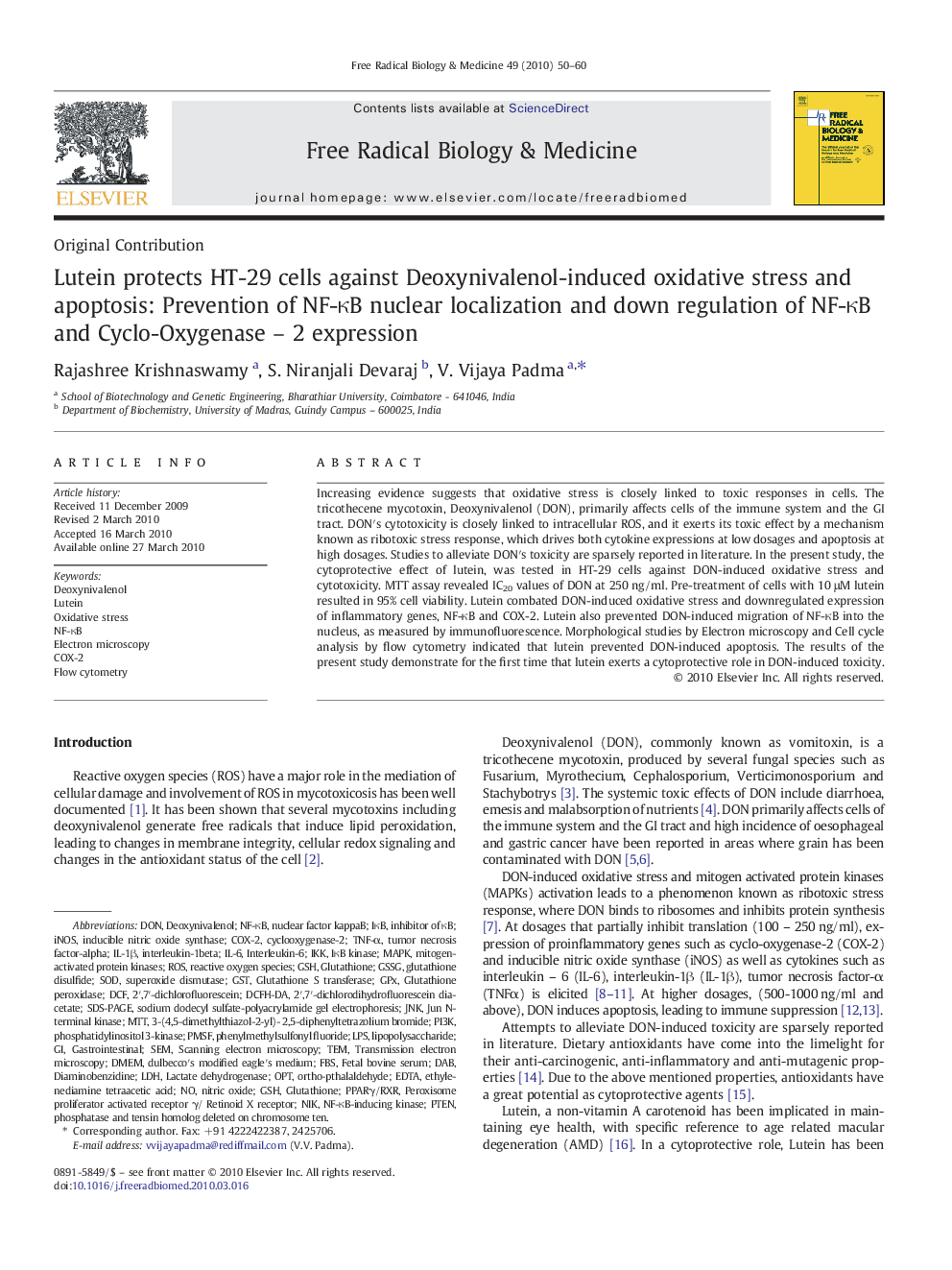| کد مقاله | کد نشریه | سال انتشار | مقاله انگلیسی | نسخه تمام متن |
|---|---|---|---|---|
| 1909416 | 1046723 | 2010 | 11 صفحه PDF | دانلود رایگان |

Increasing evidence suggests that oxidative stress is closely linked to toxic responses in cells. The tricothecene mycotoxin, Deoxynivalenol (DON), primarily affects cells of the immune system and the GI tract. DON′s cytotoxicity is closely linked to intracellular ROS, and it exerts its toxic effect by a mechanism known as ribotoxic stress response, which drives both cytokine expressions at low dosages and apoptosis at high dosages. Studies to alleviate DON′s toxicity are sparsely reported in literature. In the present study, the cytoprotective effect of lutein, was tested in HT-29 cells against DON-induced oxidative stress and cytotoxicity. MTT assay revealed IC20 values of DON at 250 ng/ml. Pre-treatment of cells with 10 μM lutein resulted in 95% cell viability. Lutein combated DON-induced oxidative stress and downregulated expression of inflammatory genes, NF-κB and COX-2. Lutein also prevented DON-induced migration of NF-κB into the nucleus, as measured by immunofluorescence. Morphological studies by Electron microscopy and Cell cycle analysis by flow cytometry indicated that lutein prevented DON-induced apoptosis. The results of the present study demonstrate for the first time that lutein exerts a cytoprotective role in DON-induced toxicity.
Journal: Free Radical Biology and Medicine - Volume 49, Issue 1, 1 July 2010, Pages 50–60